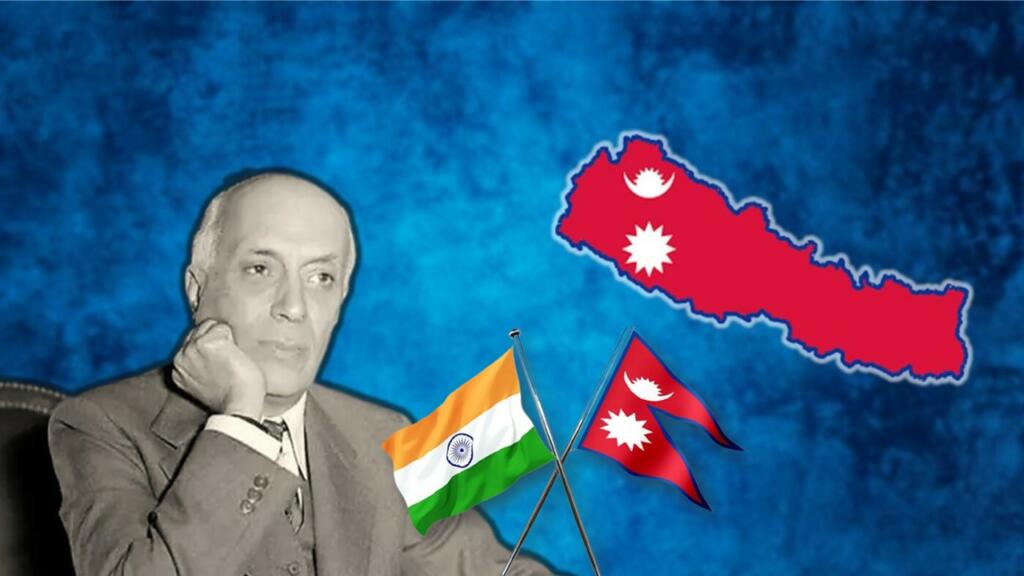Nepal India merger: If diplomacy were a sport, India would be regarded an expert. It may be difficult to imagine, but diplomacy is very important in India. However, this was not always the case, and following independence, India made several mistakes, the repercussions of which it is still dealing with today. This article explains how Nepal was once interested in joining India and how India’s rejection of this proposal resulted in long-term geographical and cultural consequences.
Merger: Common heritage of Nepal and India
Although the Nepalese government may hold a different view, it cannot be denied that India and Nepal share a common heritage, which is deeply ingrained in the culture of the two nations. Even today, Nepal is home to various forms of Sanatan culture, which is also present in India. Due to the strong ties of kinship and culture, the borders between Nepal and India are relatively unrestricted when compared to those of Pakistan. Every year, numerous devotees visit Nepal to pay their respects to Pashupatinath, a unique form of Lord Shiva.
Nepal shares its borders with two significant Indian states, Uttar Pradesh and Bihar, and the cultural ties between Nepal and Bihar are particularly noteworthy. It is believed that many areas of the Mithila province, which is present-day Nepal, were once a part of India’s Mithila region. Some people also culturally consider Nepal as a part of “Mithilaanchal.”
Also read: Nehru’s Historic Blunder: Why Balochistan Remains Disconnected from India
Nepal’s proposal that could change history
It is interesting to know that Nepal once expressed its willingness to merge with India. The British had established control over most of India, but Nepal’s unique geography made it difficult for them to establish complete control over the country. Therefore, they proposed a treaty, which Nepal accepted. According to reports by the Institute for Defence Studies and Analysis and Professor SD Muni from JNU, the then-Rajpramukh of Nepal believed that merging with India would be beneficial for Nepal.
A peace and friendship treaty was signed between India’s representative, Chandreshwar Prasad Narayan Singh, and the then Nepalese Prime Minister, Mohan Shamsher Jung Bahadur Rana, which clarified the political, economic, and strategic relations between the two countries. However, since then, many political changes have taken place in Nepal, and its foreign policy towards India has also changed.
Also read: Unearthing the Dark Secrets of Nehru’s Reign: The Roy Bucher Papers
Political turmoil, including the use of military methods, occurred in Nepal during the rule of the Ranas and the ascension of King Tribhuvan. The Nepali Congress and some dissatisfied Ranas who supported democracy rallied behind Tribhuvan, leading to a revolution in 1950 aimed at overthrowing the Ranas. In 1951, Tribhuvan became the leader of Nepal and reinstated a limited democratic system through an interim constitution.
Despite the offer to merge Nepal with India, Nehru declined, aware of the potential to bolster his international image. Professor Muni of JNU claimed that Nehru recognized the politics of international alliances that were working against China and the opposition that India faced due to the merger of Goa. Therefore, Nehru did not deem it feasible to merge Nepal with India, although there was a strong relationship between the two countries in 1950, as evidenced by the treaty signed during the Rana era.
Also read: The Epic Humiliation: Stalin’s Treatment of Nehru’s Sibling Vijayalaxmi Pandit
Nepal India merger: Still have to face the consequences
The Quint also reported on this matter, stating that while Tribhuvan was in favour of close relations with India, Nehru preferred that Nepal remain independent. Nehru was concerned that a Nepal India merger could lead to further problems with British and American intervention. This viewpoint was also echoed by former President Pranab Mukherjee a few years ago.
If Nepal had merged with India, it could have potentially reduced some of the cultural and geographical problems that India faces today, including extremism and communist movements that China supports in Nepal. However, Nehru made many mistakes during his tenure as Prime Minister, including the missed opportunity to bring Nepal under India’s umbrella, and history may not forgive him for those decisions. Additionally, India’s pursuit of a permanent seat in the UN Security Council has also been hindered by such missed opportunities.
Support TFI:
Support us to strengthen the ‘Right’ ideology of cultural nationalism by purchasing the best quality garments from TFI-STORE.COM
